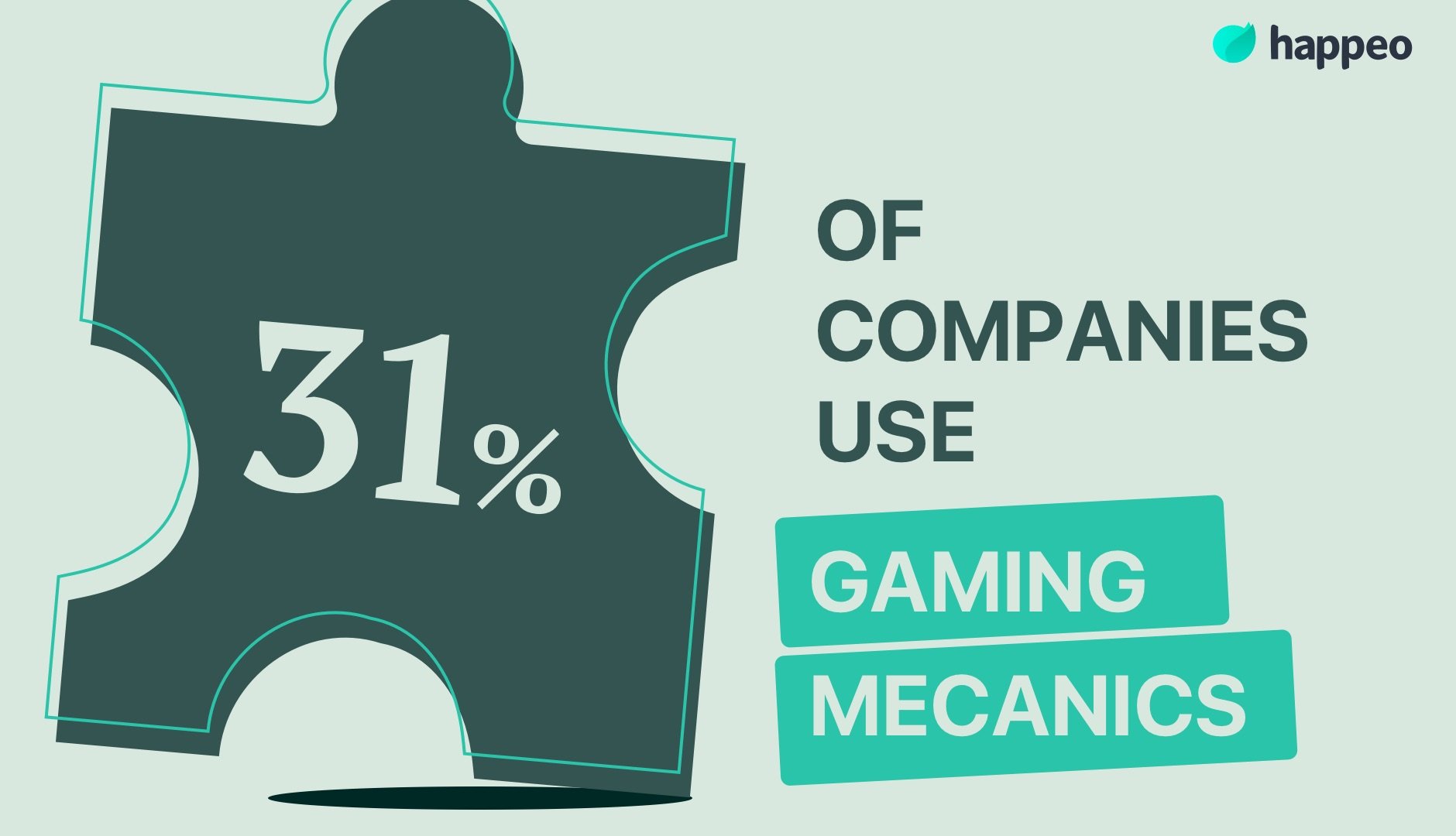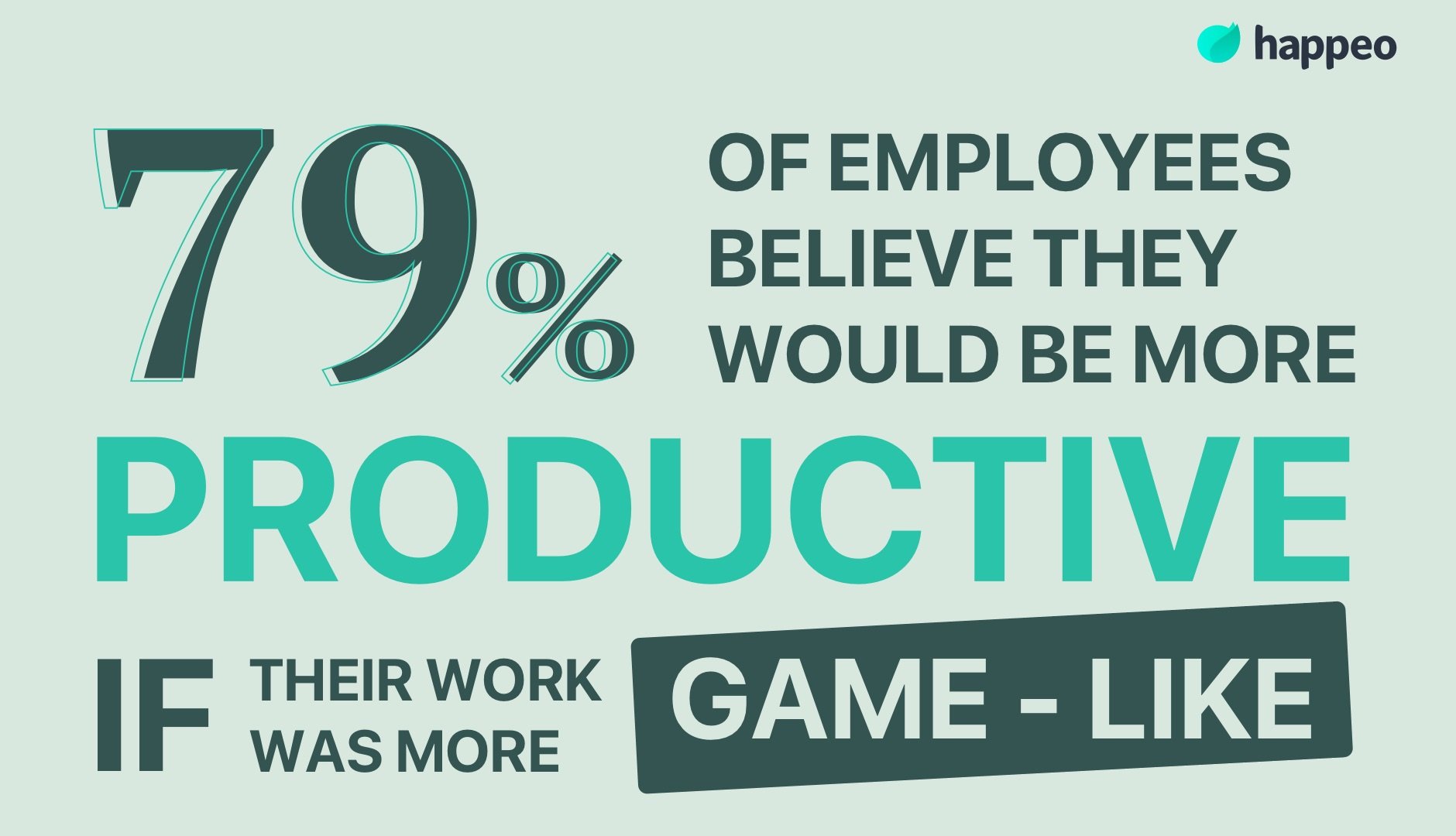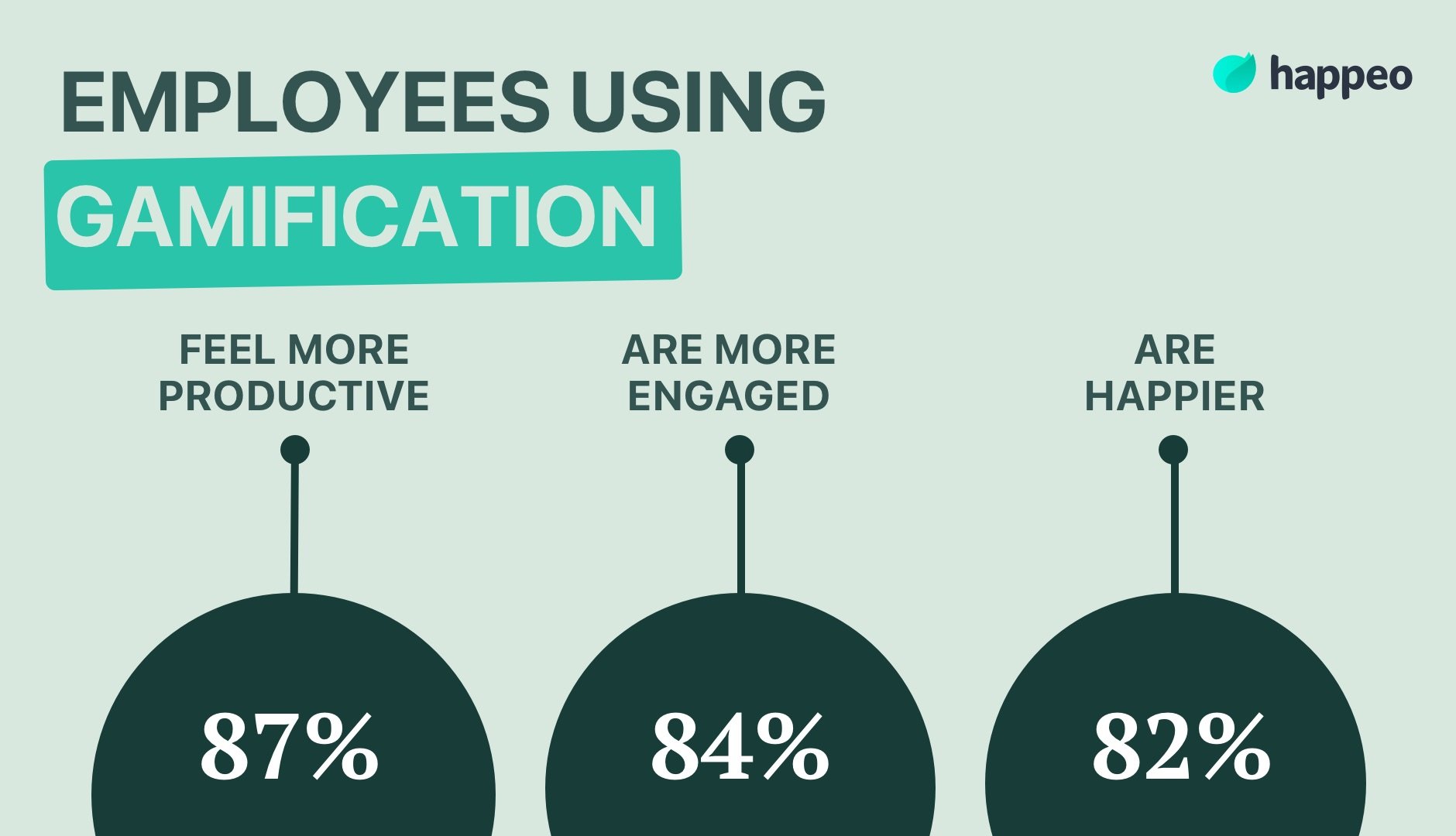
Internal Communications Quick guides
How to use intranet gamification to drive adoption and engagement

6 mins read
Start building your digital home with Happeo
Request a demoInternal Communications Quick guides
Product
Features
Solutions
Happeo for
Use cases
Resources
Explore
Support
Happeo For
Use cases
Comparisons
Explore
Support
Recent
Internal Communications Quick guides


Jonathan Davies
6 mins read
So you have a shiny new intranet. It’s great, really, isn’t it? It holds so much promise, so much potential. And yet… your workforce isn’t (yet) enamored.
They’re complaining about change, about having to get used to another new system. They’re struggling to know where to go and what to do. And despite all of your communications and guidance helping them out, they still aren’t logging on much.
You need an intervention. You need some form of power, a weapon, or maybe an assassin to stalk through the office – or better yet, a superhero to come and take charge and swing everything in the right direction.
That’s right – we’re here to talk about gamification.
The concept has been around for a while now, and it’s been taking hold by stealth. You might not even realize you’ve introduced it. Do you give out badges for good behaviour in your digital workplace? Have a weekly quiz? Do you have a leaderboard for most helpful employees, or reward-based incentive programmes? Then a word to the wise: you’ve already established gamification at work.
Do you give out badges for good behaviour in your digital workplace? Have a weekly quiz? Do you have a leaderboard for most helpful employees, or reward-based incentive programmes? Then a word to the wise: you’ve already established gamification at work.
It’s about leading employees down the paths you want them to go by incentivising that behaviour. And as your workforce becomes dominated by Millennials and Generation Z, it’s gamification that will get them using the systems you want them to.
Watch video
The term “intranet gamification” means introducing game-like elements to your intranet platform – levels, badges, leaderboards, points and rewards for behaviour. Gaming revolves around the idea of achievement and status, and includes the principles of rewards, competition, challenges, and personalization, to get users interested and keep them coming back to use it again. Even though studies examined the effectiveness of gamification, most companies don’t use them. According to research from NICE Systems, gaming mechanics are used by only 31% of companies.

Intranet gamification is used to:
Adding gamification to your intranet can help you increase adoption. Similar to other enterprise gamification solutions, intranet gamification takes elements that are typically found in gameplay - hence using some competition during the workday, encouraging employees to return to the platform.

Introduce rewards for using the intranet portal for expenses submission, or for annual leave applications. Recognize the biggest contributors to conversations and blogging. Do it in a way that makes the employee feel warm and fuzzy, give them that adrenaline rush, and they’ll be more likely to come back and repeat the behaviour.
TalentLMS surveyed a group of US employees who experienced gamification at work. They found employees feel that gamification makes them more productive (87%), more engaged (84%) and happier (82%) at work. They also found penalties and punishment for not completing tasks would work in only 7% of cases.

Gamification can be a great team collaboration and team-building opportunity; imagine if colleagues could give out badges to thank someone for help, or to recognize the extra hours someone has been putting in on a project. This is not something that has to be driven from the top. In fact, when the employees run with your gamification, you know it’s become part of the way you do things.
It’s not all fun and games, remember: this is about the serious business of getting employees to use and love your Google intranet platform. That means you need to attach outcomes to your gamification and drive behaviour change.
That scenario earlier, the one about employees giving out their own badges? That’s gamification 101, and it should be part of your Google intranet and digital workplace roll-out. It’s gimmicky, sure, but it gives people a reason to log on and interact within your intranet environment.
Want people to get to know your new Google intranet? Introduce a scavenger hunt, where they need to find information embedded in different sections of your Google Workspace ecosystem to score points and win prizes. Want them to post and interact more in your channels? Try the good ol’ public badge to display on their personal profile and show off how good they are with your intranet. You could even combine the two: a scavenger hunt for someone who’s got a badge as an expert in X subject or task? Now you’re a gamification expert!
Download feature list
Gamification techniques also work brilliantly in learning and development scenarios. Even Deloitte - yes, a bunch of accountants - have seen success here. They were early adopters of gamification for Internal Communications with the Deloitte Leadership Academy (DLA) training programme. HBR reports that participants exhibited almost addictive behaviours, with a 37% increase in the number of users returning to the site each week. The DLA embedded missions, badges and leaderboards into a user-friendly platform alongside its video lectures, in-depth courses, tests and quizzes, resulting in more engaged users who were more likely to complete the online training programmes.
Book a demo
Workplace gamification can be very helpful for your organization. They encourage platform adoption, boost engagement and employee satisfaction. In times of remote work, where employees tend to be quicker disengaged and more reluctant to adapt to changes and new tools, workplace gamification can make a huge change for business.
Interested in unlocking the value of remote work? Book a demo with Happeo – we can help you improve employee engagement, Internal Communications, and productivity.
